Potřebujeme váš souhlas k využití jednotlivých dat, aby se vám mimo jiné mohly ukazovat informace týkající se vašich zájmů. Souhlas udělíte kliknutím na tlačítko „OK“.
ASTM E1193-97(2012)
Daphnia magna
Automaticky přeložený název:
Standardní příručka pro dirigování Daphnia magna Life-Cycle testů toxicity
NORMA vydána dne 1.12.2012
Informace o normě:
Označení normy: ASTM E1193-97(2012)
Poznámka: NEPLATNÁ
Datum vydání normy: 1.12.2012
Kód zboží: NS-40821
Počet stran: 19
Přibližná hmotnost: 57 g (0.13 liber)
Země: Americká technická norma
Kategorie: Technické normy ASTM
Kategorie - podobné normy:
Anotace textu normy ASTM E1193-97(2012) :
Keywords:
chronic, Daphnia magna, flow-through, invertebrate, life-cycle, renewal, toxicity, ICS Number Code 07.100.20 (Microbiology of water),13.020.30 (Environmental impact assessment)
Doplňující informace
| Significance and Use | |||||||||||||||||||||||||||||||||||||||||||||||||||||||||||||||||||||||||||||||||||||||||||||||||||||||||||||||||||||||||||||||||||||||||||||||||||||||||||||||||||||||||
|
5.1 Protection of an aquatic species requires prevention of unacceptable effects on populations in natural habitats. Toxicity tests are conducted to provide data that may be used to predict what changes in numbers and weights of individuals might result from similar exposure to the test material in the natural aquatic environment. Information might also be obtained on the effects of the material on the health of the species. 5.2 Results of life-cycle tests with 5.2.1 Life-cycle tests with 5.2.2 Life-cycle tests with 5.2.3 Life-cycle tests with 5.2.4 Life-cycle tests are used to evaluate the biological availability of, and structure-activity relationships between, test materials and test organisms. 5.3 Results of life-cycle tests with 1.1 This guide covers procedures for obtaining laboratory data concerning the adverse effects of a test material (added to dilution water, but not to food) on Daphnia magna Straus, 1820, during continuous exposure throughout a life-cycle using the renewal or flow-through techniques. These procedures also should be useful for conducting life-cycle toxicity tests with other invertebrate species, although modifications might be necessary. 1.2 These procedures are applicable to most chemicals, either individually or in formulations, commercial products, or known mixtures. With appropriate modifications, these procedures can be used to conduct tests on temperature, dissolved oxygen, pH, and on such materials as aqueous effluents (also see Guide E1192), leachates, oils, particulate matter, sediments, and surface waters. The technique, (renewal or flow-through), will be selected based on the chemical characteristics of the test material such as high oxygen demand, volatility, susceptibility to transformation (biologically or chemically), or sorption to glass. 1.3 Modification of these procedures might be justified by special needs or circumstances. Although using appropriate procedures is more important than following prescribed procedures, results of tests conducted using unusual procedures are not likely to be comparable to results of standard test procedures. Comparison of results obtained using modified and unmodified versions of these procedures might provide useful information on new concepts and procedures for conducting life-cycle toxicity tests with D. magna. 1.4 This guide is arranged as follows:
1.5 The values stated in SI units are to be regarded as standard. No other units of measurement are included in this standard. 1.6 This standard does not
purport to address all of the safety concerns, if any, associated
with its use. It is the responsibility of the user of this standard
to establish appropriate safety and health practices and determine
the applicability of regulatory limitations prior to use.
Standard Terminology Relating to
Biological Effects and Environmental Fate Standard Guide for Assessing the Hazard
of a Material to Aquatic Organisms and Their Uses IEEE/ASTM SI 10 American National Standard for Use of the
International System of Units (SI): The Modern Metric System Standard Guide for Conducting Acute
Toxicity Tests on Aqueous Ambient Samples and Effluents with
Fishes, Macroinvertebrates, and Amphibians Standard Guide for Conducting Acute
Toxicity Tests on Test Materials with Fishes, Macroinvertebrates,
and Amphibians (Includes all amendments and changes 2/22/2023). |
Podobné normy:
Historická
1.3.2013
Historická
1.3.2013
Historická
1.12.2012
Historická
1.9.2010
Historická
1.12.2012
Historická
1.10.2011
Doporučujeme:
Aktualizace technických norem
Chcete mít jistotu, že používáte pouze platné technické normy?
Nabízíme Vám řešení, které Vám zajistí měsíční přehled o aktuálnosti norem, které používáte.
Chcete vědět více informací? Podívejte se na tuto stránku.


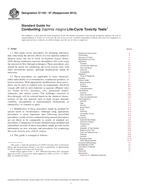
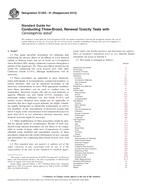 ASTM E1295-01(2013)..
ASTM E1295-01(2013)..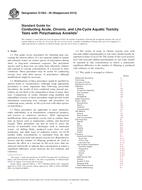 ASTM E1562-00(2013)..
ASTM E1562-00(2013)..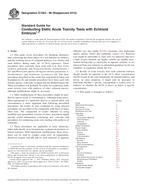 ASTM E1563-98(2012)..
ASTM E1563-98(2012)..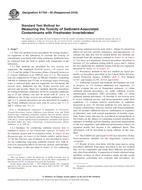 ASTM E1706-05(2010)..
ASTM E1706-05(2010)..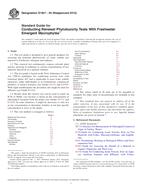 ASTM E1841-04(2012)..
ASTM E1841-04(2012)..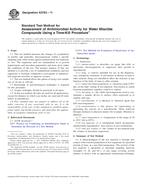 ASTM E2783-11
ASTM E2783-11
 Cookies
Cookies
